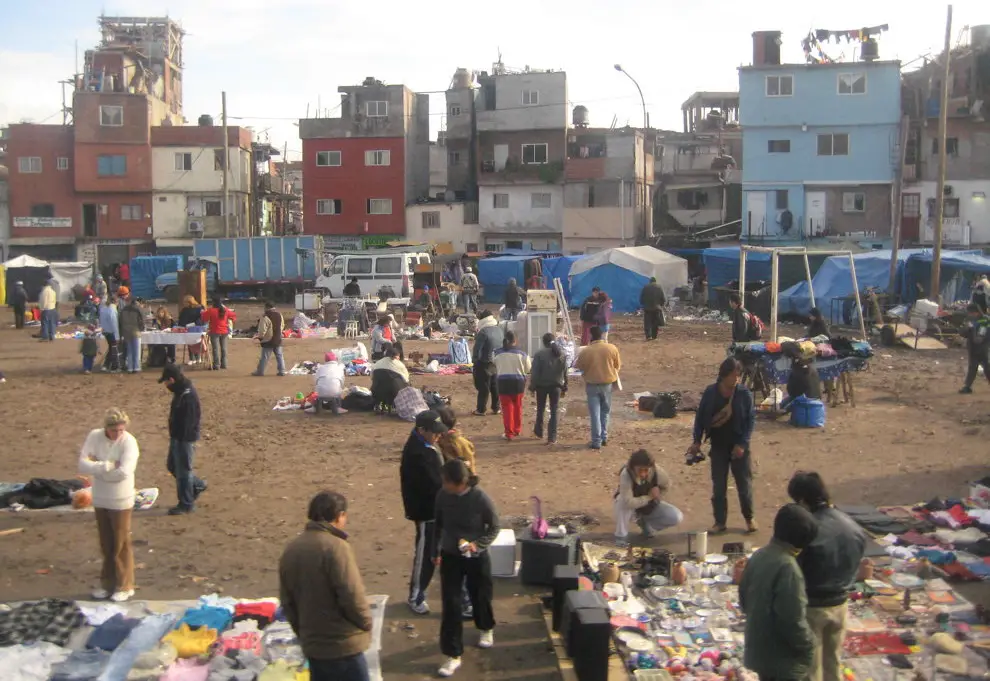Greek and Roman historical stadia aside, the stadium is a uniquely modern phenomenon. The bulk of our built environment is made of places to live, places to work, and places to shop. Even when architecture starts to take on greater symbolic value, the structures are themselves still buildings that will continue to be used, whether it’s a church, a convention centre, a museum, or a market hall. The stadium, though, sits, awaiting the infrequent, but civically-significant, occasions where a sporting event or a musical performance brings the city together in one (somewhat) cohesive group. In a way, the stadium is the ultimate form of ceremonial architecture. Forget about Frank Gehry’s Guggenheim Museum in Bilbao: the Olympic Stadia of Torino and Montréal were sites of intense-yet-brief global interest, used as part of a strategy to increase the allure of their respective cities.
As the sites of major events for short periods of time, many stadia become white elephants, destined to decay and stand as reminders of past visions of grandeur. No matter the inspiring spectacle that the structures once held early in their lives, sometimes it is too plain to see that a stadium will serve as a reminder of planning that was not site-specific and did not consider long-term effects.
There certainly is no shortage of examples of poorly executed stadia the world over. They fail for a variety of reasons: some fail due to the lack of a long-term vision for the structure’s role in the neighbourhood and some fail because of poor placement within the metropolitan region. Long-term planning for the stadium requires a focus on both the groups that will use the stadium in the future as well as those who will live and work in the neighbourhood adjacent to the stadium. Part of failing to provide a long-term vision is lacking an anchor tenant for the venue, an issue that London, like Beijing and its National Stadium, is already struggling with. The city’s new Olympic Stadium, which has a gargantuan capacity of 80,000, opened without any consideration of what to do with the structure following the close of the 2012 Olympic and Paralympic Summer Games. London’s Olympic Stadium has generated interest from a wealth of parties (Tottenham Hotspur and West Ham United are the two central competitors for the space), but constructing a major project such as an Olympic Stadium without an anchor tenant in place is nothing short of poor practice that could have rendered Stratford cultureless.

In terms of poor placement, Ottawa’s Scotiabank Place is a grave offender of a development that completely lacked the vision to attempt to build downtown. Actually located over 20km away from Ottawa in nearby Kanata, the 20.500-capacity arena isn’t close to anything: a quick fly-over with Google Maps shows that the arena’s nearby neighbours are farmer’s fields and a freeway. While the arena’s permanent tenant, the Ottawa Senators of the National Hockey League, continues to give Ottawans a reason to make the journey, today’s climate concerns mean that there is no logical reason to locate a major stadium so far outside of the urban setting.
So, what is good practice when it comes to designing a stadium? How can these massive cultural hubs offer the services expected of them by tenants organising large-scale sporting and cultural events, on the one hand, while ensuring that the neighbourhood that the stadium sits in reaps the benefits as well? Perhaps one of the most obvious criteria is to have a central location to start with, a location that is densely populated and is well-connected by public transportation modes. Another would be to ensure that there is a consultation process with the neighbourhood: if it’s going to be around the corner from their homes, nearby residents and businesses should be able to weigh in on the process. Finally, unique façade designs need to integrate well into the character of the neighbourhood so that the district has a cohesive aesthetic.

As far as central locations go, it’s hard to ignore the False Creek neighbourhood in Vancouver. The area is home to both of Vancouver’s major stadia: B.C. Place and Rogers Arena. It is also home to dozens of high-rise mixed-use towers, a rapid-transit station, and is within close proximity to an array of cultural venues. The stadia serve as major nodes in Downtown Vancouver, and are hubs of excitement on game-day for urban and suburban visitors alike. This is the embodiment of the ideal spatial location.
Fitting well into the neighbourhood is also a difficult task for a stadium design. One recent redevelopment that seems to be working is that of the Adelaide Oval, a cricket and football stadium in the southern Australian city. While not even necessarily completely urban or central, the stadium’s white canopies subtly accentuate the Oval’s park setting in a way that does not feel out of place. The redevelopment does not try to make a grand architectural statement like Munich’s Allianz Arena: rather, it just tries to be complementary. And, while there is a time and a place for ground-breaking architectural design, stadium designers are beginning to realise the local spatial and cultural importance of the behemoths that they build.


